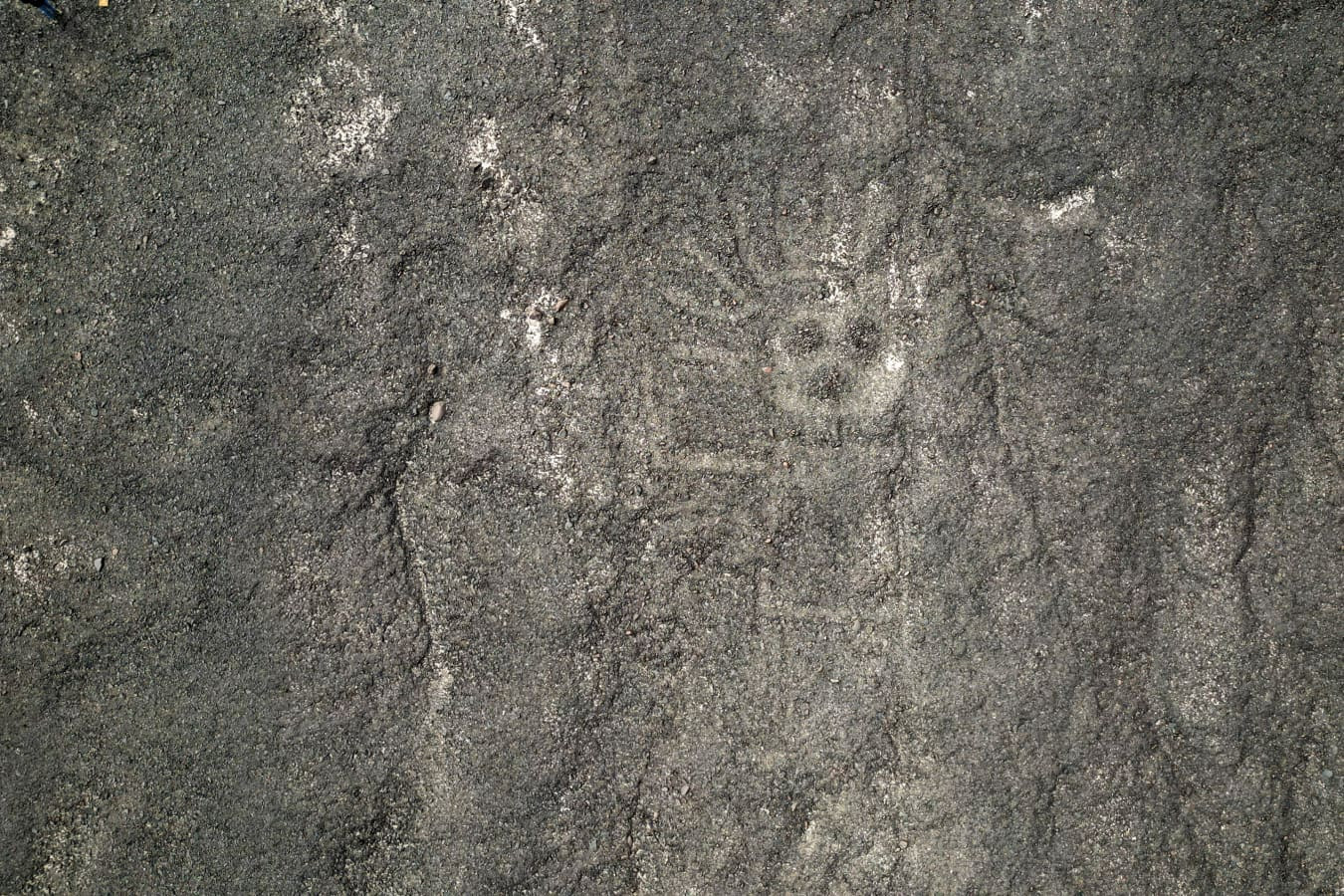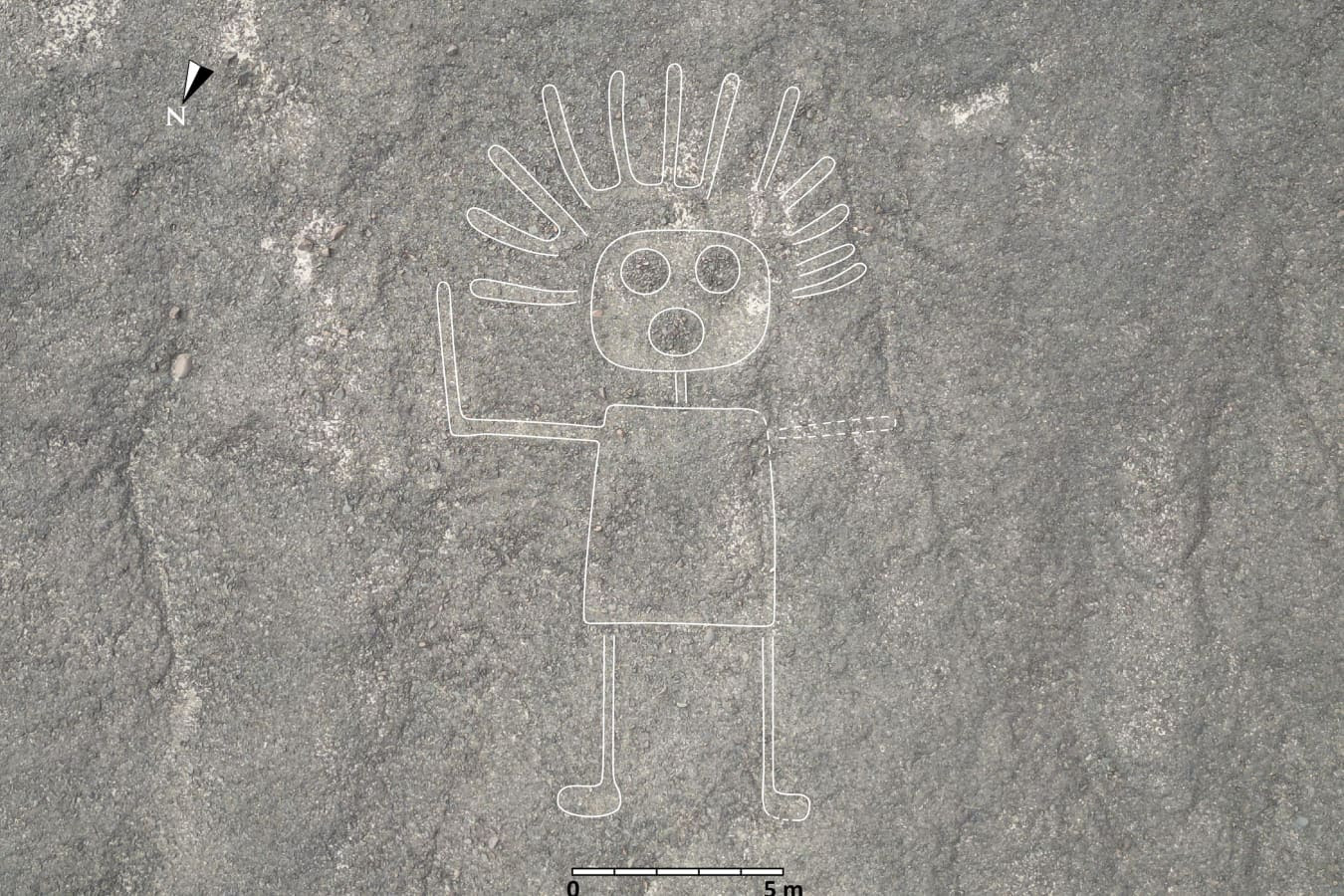Nazca lines
« previous post | next post »
For basic facts, see below.
Thanks to AI and our Japanese colleagues, the study of Peru's mysterious Nazca lines has made a quantum leap forward.
AI Revealed a New Trove of Massive Ancient Symbols
The 2,000-year-old geoglyphs offer clues to ancient Nazca people and their rituals
By Aylin Woodward, Science Shorts, WSJ (Nov. 6, 2024)
Anthropologists have spent decades documenting a mysterious collection of symbols etched into the Peruvian desert, depicting everything from human decapitation and domesticated animals to knife-wielding orcas.
In the past century or so, 430 of these geoglyphs have been found. Now, an analysis using artificial intelligence has nearly doubled the number in just six months.
Constructed primarily by ancient South American people known as the Nazca millennia ago, the geoglyphs, which can be as long as a football field, are concentrated on a roughly 150-mile-square area called the Nazca Pampa. The Nazca people created the geoglyphs in an area unsuitable for farming, removing the black stones that pepper the desert to reveal a layer of white sand beneath. The contrast between tones yielded the geoglyphs.
Much of their mystery lies in how challenging it is to spot them.
“These geoglyphs have been around for at least 2,000 years, during which time dust has accumulated on the white lines and areas, causing their colors to fade,” said Masato Sakai, a professor of anthropology at Yamagata University in Japan and lead author of a study published in the journal Proceedings of the National Academy of Sciences detailing the new discoveries.
The symbols fall into two categories. Larger figurative geoglyphs, known as the Nazca Lines, average about 300 feet in length, Sakai said, while smaller ones, akin to marble reliefs, average just 30 feet.


A humanoid geoglyph and its rendering in the Nazca Desert.
The Yamagata University Institute of Nasca.
The larger, line-type geoglyphs primarily depict wild animals, while a majority of the smaller, relief-type ones feature humanlike figures, human heads and livestock such as llamas—themes that don’t appear in the line-type geoglyphs at all. Identifying more of the relief-type geoglyphs is critical to understanding the symbolic difference between the two.
Sakai and his research team, with help from IBM Research, trained and used an artificial-intelligence model to spot new geoglyphs from high-resolution aerial photographs taken in 2015.
AI helped identify 1,300 or so promising new etchings, all of the smaller relief-type. A field survey of some of those in 2022 confirmed 303 geoglyphs. The remainder are still under investigation.
Many of the newly identified geoglyphs were found within viewing distance of ancient trails that crisscross the Nazca Pampa, according to the study authors, making a compelling case that the symbols were meant to share information with individuals or small groups who walked along the trails.
By contrast, the larger geoglyphs functioned as enormous wild-animal shaped plazas for communal rituals, according to Sakai. Research reveals they are located at the starting and ending points of pilgrimage routes to sacred sites and temples.
“I believe that their shapes were intended to harness the power of wildlife for ritual activities,” Sakai said.
What do you think the lines radiating from the head of the humanoid figure (pictured in the WSJ article above) are meant to represent—the rays of the sun? A feathered headdress? For many more examples and details of the AI applications and the overall research project, see the The Japan Times articles cited in "Selected readings". Search also under — nazca lines asahi shimbun — for additional articles with photographs and documentation.
Basic facts
The Nazca Lines in southern Peru are a group of pre-Columbian geoglyphs etched into desert sands. Covering an area of nearly 1,000 sq. kilometers, there are about 300 different figures, including animals and plants. Composed of over 10,000 lines, some of which measure 30 meters wide and stretch more than 9 kilometers, the figures are most visible from the air or nearby hilltops. ― Google
Address: Peru
Coordinates: 14°41′51″S 75°8′6″W / 14.69750°S 75.13500°W
UNESCO Site Id: 700
Inscription: 1994 (18th Session)
Selected readings
- "Nazca lines" — Wikipedia
- "The Japanese researcher uncovering the mystery of Peru’s Nazca Lines", by Alex K.T. Martin, The Japan Times (10/21/24)
- "AI research uncovers 300 ancient etchings in Peru's Nazca desert", AFP-JiJi, JiJi (9/25/24)
- "AI-accelerated Nazca survey nearly doubles the number of known figurative geoglyphs and sheds light on their purpose", by Masato Sakai, Akihisa Sakurai, Siyuan Lu, and Marcus Freitag, PNAS (9/23/24)
Significance
This paper demonstrates how AI accelerates discoveries in archaeology, even in a region as well known as the United Nations Educational, Scientific and Cultural Organization (UNESCO) World Heritage site of Nazca. Our vastly improved account of relief-type figurative geoglyphs reveals that they differ from line-type figurative geoglyphs beyond their style and size. The line type and relief type also differ in the motifs they depict, their distribution, and their relation to the meshwork of winding trails and the ceremonial network of linear/trapezoidal geoglyphs. Taken together, this makes a compelling case for different nature and purposes of relief-type and line-type figurative geoglyphs: the former sharing information about human activities with individuals or small groups and the latter built and used by the community for ceremonial purposes.Abstract
It took nearly a century to discover a total of 430 figurative Nazca geoglyphs, which offer significant insights into the ancient cultures at the Nazca Pampa. Here, we report the deployment of an AI system to the entire Nazca region, a UNESCO World Heritage site, leading to the discovery of 303 new figurative geoglyphs within only 6 mo of field survey, nearly doubling the number of known figurative geoglyphs. Even with limited training examples, the developed AI approach is demonstrated to be effective in detecting the smaller relief-type geoglyphs, which unlike the giant line-type geoglyphs are very difficult to discern. The improved account of figurative geoglyphs enables us to analyze their motifs and distribution across the Nazca Pampa. We find that relief-type geoglyphs depict mainly human motifs or motifs of things modified by humans, such as domesticated animals and decapitated heads (81.6%). They are typically located within viewing distance (on average 43 m) of ancient trails that crisscross the Nazca Pampa and were most likely built and viewed at the individual or small-group level. On the other hand, the giant line-type figurative geoglyphs mainly depict wild animals (64%). They are found an average of 34 m from the elaborate linear/trapezoidal network of geoglyphs, which suggests that they were probably built and used on a community level for ritual activities.
[Thanks to Mark Metcalf and June Teufel Dreyer]
Nick Kaldis said,
November 6, 2024 @ 4:51 pm
There's a NOVA special on this, free online:
https://www.pbs.org/video/nazca-desert-mystery-66vtkw/
KeithB said,
November 6, 2024 @ 5:57 pm
"What do you think the lines radiating from the head of the humanoid figure (pictured in the WSJ article above) are meant to represent—the rays of the sun? A feathered headdress? "
Given its expression, I would say its hair is on fire.
Benjamin E. Orsatti said,
November 7, 2024 @ 8:23 am
"What do you think the lines radiating from the head of the humanoid figure (pictured in the WSJ article above) are meant to represent—the rays of the sun? A feathered headdress?"
Zodiac? ('cause there's 12 of 'em).
Philip Anderson said,
November 7, 2024 @ 4:06 pm
The Babylonians and Greeks had 12 signs of the Zodiac, but the Maya had 13, so if there was a Peruvian zodiac sign, it probably had 13 too:
“The Maya identified 13 constellations along the ecliptic. These are the content of an almanac in the Paris Codex. Each of these was associated with an animal. These animal representations are pictured in two almanacs in the Madrid Codex where they are related to other astronomical phenomena – eclipses and Venus – and Haab rituals”
https://en.m.wikipedia.org/wiki/Maya_astronomy
Lucas Christopoulos said,
November 7, 2024 @ 7:06 pm
Hands up, related to the worship of the the Sun and with rays around its head is most likely linked with Kinich ahau.
Richard Hershberger said,
November 8, 2024 @ 6:41 am
In my youth, Erich von Däniken assured me that these were proof of ancient aliens. I'll stick with that, if only out of nostalgia.
Chris Button said,
November 8, 2024 @ 8:47 am
It's interesting how the head is the shape of a Mayan glyph.
KeithB said,
November 8, 2024 @ 9:19 am
Richard Hershberger:
Of course, they are proof of aliens, graph paper had not been invented yet!
I was visiting the visitor center of Petroglyph National Monument in Albuquerque at a time that the main path was closed due to some earth movement, IIRC. There was a man there arguing to get in and see them because he had determined what they *really* meant. I never really figured out whether he was a crackpot or a serious researcher.